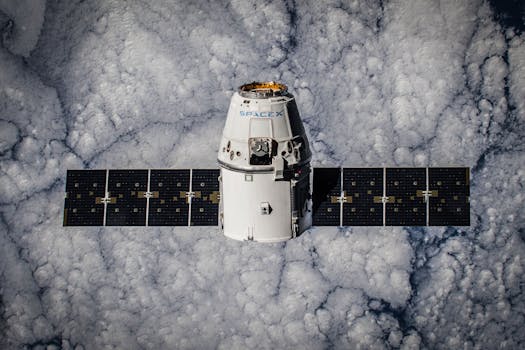
The Future of Satellites: Revolutionizing Global Communication and Exploration
The Future of satellites is an exciting and rapidly evolving field, with new technologies and innovations emerging every year. Satellites have been a crucial part of our daily lives, from providing internet connectivity to enabling global communication and navigation. As we look to the future, it’s clear that satellites will play an even more significant role in shaping our world.
Satellites have come a long way since the launch of the first artificial satellite, Sputnik, in 1957. Today, there are over 5,000 satellites in orbit around the Earth, and this number is expected to grow exponentially in the coming years. The increasing demand for satellite-based services, such as satellite internet, navigation, and Earth observation, is driving the development of new satellite technologies and constellations.
Advancements in Satellite Technology
One of the most significant advancements in satellite technology is the development of small satellites, also known as CubeSats. These tiny satellites, which are typically the size of a shoebox, are much cheaper to build and launch than traditional satellites. They are also more agile and can be used for a variety of applications, from Earth observation to communication. Companies like Planet Labs and SpaceX are leading the charge in small satellite development, with constellations of hundreds of satellites providing daily images of the Earth and enabling global internet connectivity.
Another area of advancement is in the development of satellite propulsion systems. Traditional satellites use chemical propulsion systems, which are heavy and inefficient. New propulsion systems, such as electric propulsion and advanced ion engines, are being developed to increase the efficiency and lifespan of satellites. These systems will enable satellites to operate for longer periods and travel farther distances, making them ideal for deep space missions.
Satellite Internet and the Digital Divide
Satellite internet is another area where satellites are making a significant impact. With the launch of satellite constellations like SpaceX’s Starlink and Amazon’s Kuiper Systems, satellite internet is becoming a reality. These constellations will provide high-speed, low-latency internet connectivity to remote and underserved communities around the world, helping to bridge the digital divide. Satellite internet will also enable new applications, such as remote healthcare and education, and will provide a backup to traditional fiber optic networks in case of outages.
However, the development of satellite internet also raises concerns about space debris and the potential for interference with other satellite systems. As the number of satellites in orbit increases, there is a growing risk of collisions and the creation of more space debris. To mitigate this risk, companies and governments are working together to develop new regulations and standards for satellite development and operation.
Exploration and Space Travel
Satellites are also playing a crucial role in space exploration and travel. With the development of new propulsion systems and life support technologies, satellites are enabling humans to travel farther and longer in space. The European Space Agency’s Gaia mission, for example, has created a highly accurate 3D map of the Milky Way galaxy, while NASA’s Artemis program is working towards returning humans to the Moon by 2024.
Satellites are also being used to explore other planets and celestial bodies in our solar system. The Mars Reconnaissance Orbiter, for example, has been studying the Martian geology and climate since 2005, while the Cassini mission explored Saturn and its moons from 2004 to 2017. These missions have provided a wealth of new information about our solar system and have helped scientists to better understand the formation and evolution of our universe.




